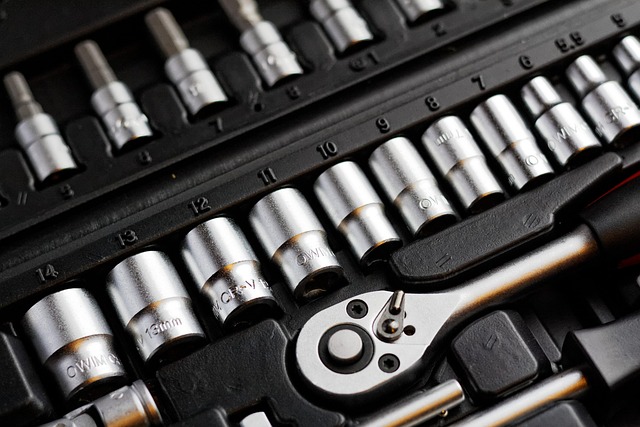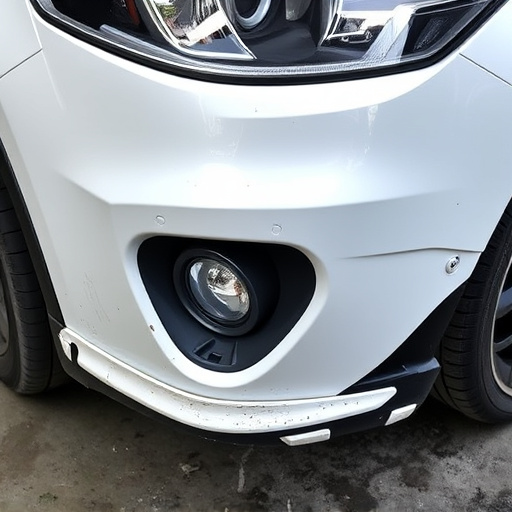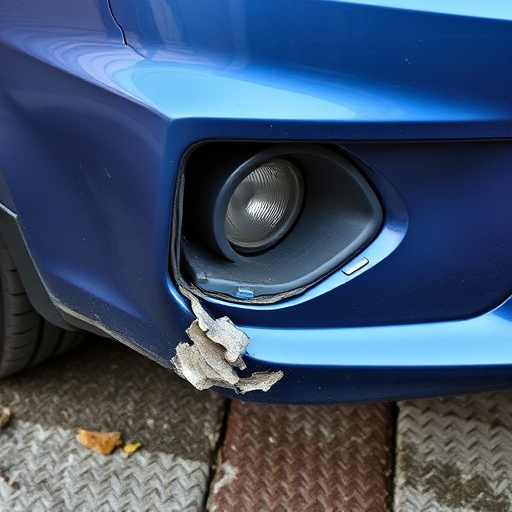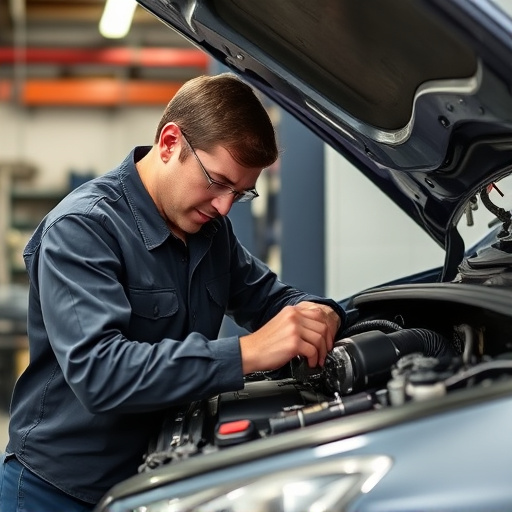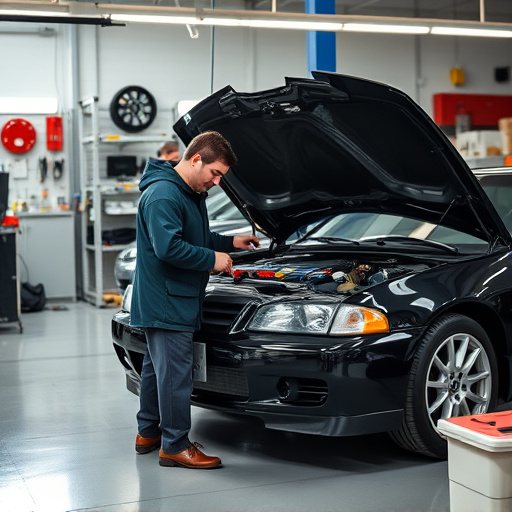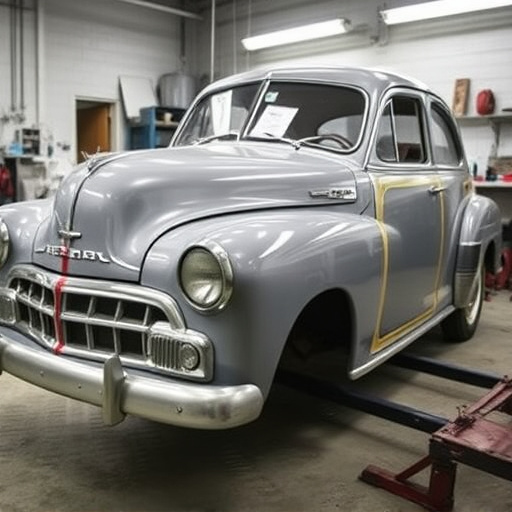Computerized diagnostics repair is a modern, efficient method for fixing complex automotive systems using specialized software and hardware tools. This approach scans and analyzes vehicle components, providing precise data on performance and condition. By detecting early issues like sensor malfunctions or communication errors, it prevents costly breakdowns. Preparing involves gathering and organizing tools, familiarizing oneself with the system layout, and conducting initial checks. Interpreting results is crucial for strategic repair planning, allowing technicians to prioritize tasks and tailor their approach based on detailed insights into vehicle performance. This method ensures accurate troubleshooting, efficient repairs, and minimized downtime for complex damages like collisions or body restoration.
Unleash the power of your computer with expert guidance on computerized diagnostics repair. This comprehensive guide breaks down the process into manageable steps, ensuring you get the most from your technology investment. From understanding the basics of how these systems work to preparing for and executing thorough diagnostics, each section equips you to interpret results accurately and plan effective next steps. Maximize your computer’s potential – start repairing like a pro today!
- Understanding Computerized Diagnostics Repair: The Basics
- Preparing for and Carrying Out Comprehensive Diagnostics
- Interpreting Results and Planning Next Steps Effectively
Understanding Computerized Diagnostics Repair: The Basics

Computerized diagnostics repair is a modern approach to identifying and fixing issues within complex automotive systems. It involves using specialized software and hardware tools to scan and analyze various components of a vehicle, providing precise data about their performance and condition. This method has become increasingly important as today’s cars are packed with sophisticated electronics and computer modules that control everything from engine operations to safety features.
By employing computerized diagnostics, repair technicians can efficiently detect even subtle problems that might go unnoticed through traditional manual inspections. It allows for more accurate troubleshooting, ensuring that repairs are targeted and effective. Moreover, this technology offers a deeper understanding of a car’s “digital heartbeat,” enabling the detection of potential issues before they turn into costly breakdowns. For example, it can identify sensor malfunctions, communication errors between modules, or even subtle changes in engine performance, all of which contribute to maintaining optimal vehicle health.
Preparing for and Carrying Out Comprehensive Diagnostics
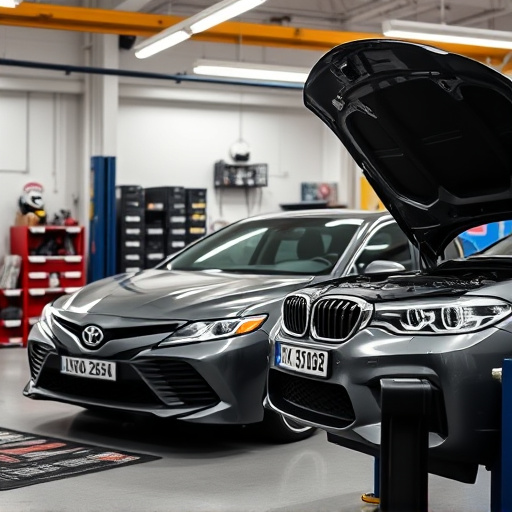
Preparing for comprehensive diagnostics is a crucial step in ensuring an accurate and efficient computerized diagnostics repair process. Begin by gathering all necessary tools and equipment, double-checking their functionality, and organizing them in a logical sequence. This includes specialized diagnostic scanners, cables, sensors, and any other tools specific to your vehicle’s make and model. Before starting, familiarize yourself with the vehicle’s system layout, identifying key components and potential trouble areas. Creating a checklist of these elements will streamline the process.
Carrying out comprehensive diagnostics involves a systematic approach. Start with initial checks, such as power supply and basic sensor functionality, using the diagnostic scanner to capture base readings. Proceed with more detailed tests, gradually narrowing down potential issues. This methodical procedure enables technicians to isolate problematic areas, whether it’s a faulty sensor, wiring harness damage, or a more complex computer unit malfunction. Remember, proper preparation and execution are key to obtaining accurate results in computerized diagnostics repair, facilitating effective troubleshooting and timely vehicle restoration.
Interpreting Results and Planning Next Steps Effectively

Interpreting the results from computerized diagnostics is a crucial step in effectively planning the next steps for repair. These advanced systems provide detailed insights into a vehicle’s performance and potential issues, allowing for more accurate assessments compared to traditional methods. By understanding the data, technicians can identify specific problem areas, whether it’s a minor sensor glitch or a significant engine component failure. This level of precision enables them to tailor their approach, ensuring efficient and targeted repairs.
Once the diagnostics have revealed the issues, the next step is to develop a strategic plan for car repair services, especially in cases of more complex damages like car collision repair or car body restoration. It involves prioritizing tasks, gathering necessary parts, and considering potential challenges. Effective planning ensures that the repair process flows smoothly, minimizing downtime and maximizing the efficiency of labor and resources.
Computerized diagnostics repair is a powerful tool for identifying and resolving complex vehicle issues efficiently. By understanding the basic principles, preparing thoroughly, and interpreting results accurately, technicians can optimize their diagnostic processes. This, in turn, leads to faster repairs, improved customer satisfaction, and enhanced reputation for automotive service centers. Embrace comprehensive diagnostics as a game-changer in modern vehicle maintenance.
